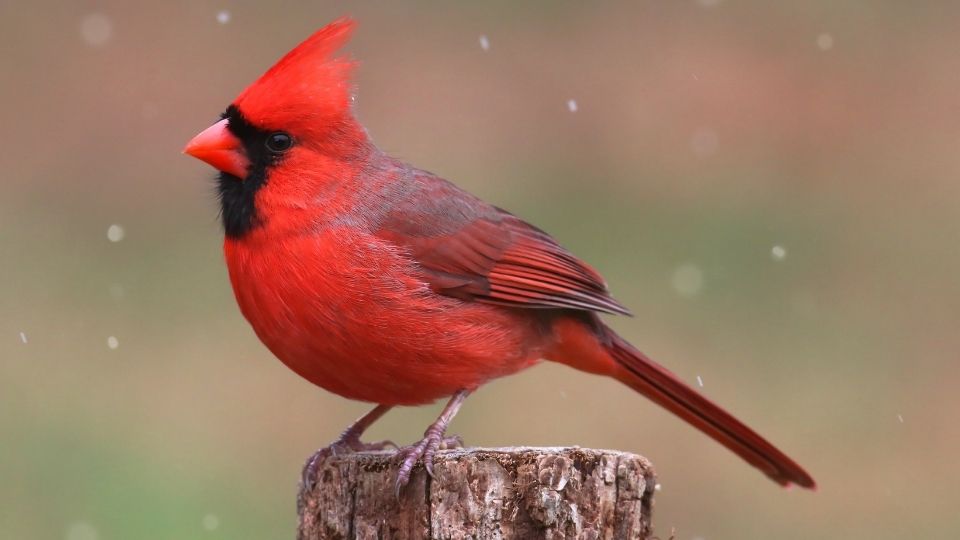Two types of cardinal birds that can be found in the US are the Northern Cardinal, that is the most commonly recognized species, with a brilliant red appearance; and the other is the Red-crested or Brazilian Cardinal which
Cardinal birds are one of the most recognizable birds in North America. The male Cardinal’s striking red feathers, black mask, and red crest give them a distinct look that is unmistakable.
These North American birds can be found at bird feeders year-round. Even in the coldest winter, you can find these favorite backyard birds happily collecting birdseed and sunflower seeds in the snow.
This beloved and brilliant red bird is the mascot of seven professional sports teams and countless little league teams.
Seven states have designated the Cardinal bird as their state bird.
How did cardinals get their name?
Cardinals belong to the Cardinalidae family, which includes Grosbeaks and Buntings.

Cardinal birds get their name from Catholic Bishops.
Named for their brilliant red color and their impressive crest, Cardinal birds, are said to resemble the red robes worn by Roman Catholic Cardinals.
Where can cardinals be found?
Both species of cardinal belong to the Genus Cardinalis. Of the two different species, the Northern Cardinals (Cardinalis cardinalis) is the most common in North America.
The Northern Cardinal can be found throughout most of the eastern half of the United States and into New York and Canada.
The Desert Cardinal (Cardinalis sinuatus) is confined to South Arizona, New Mexico, and Texas.
Sometimes called the Pyrrhuloxia or Gray-tailed Cardinal, the Desert Cardinal has also been spotted in a few cities in Mexico near the border of their home state range.
Northern Cardinal vs. Desert Cardinal: Key Differences
Since the Desert Cardinal has a confined home range, range maps used to be the primary way to tell the two apart.
But in the last 50 years, the Northern Cardinal range has spread east and west. Because of this, the two species overlap along the edge of their respective ranges.
Luckily, both cardinal bird species have very distinctive features.
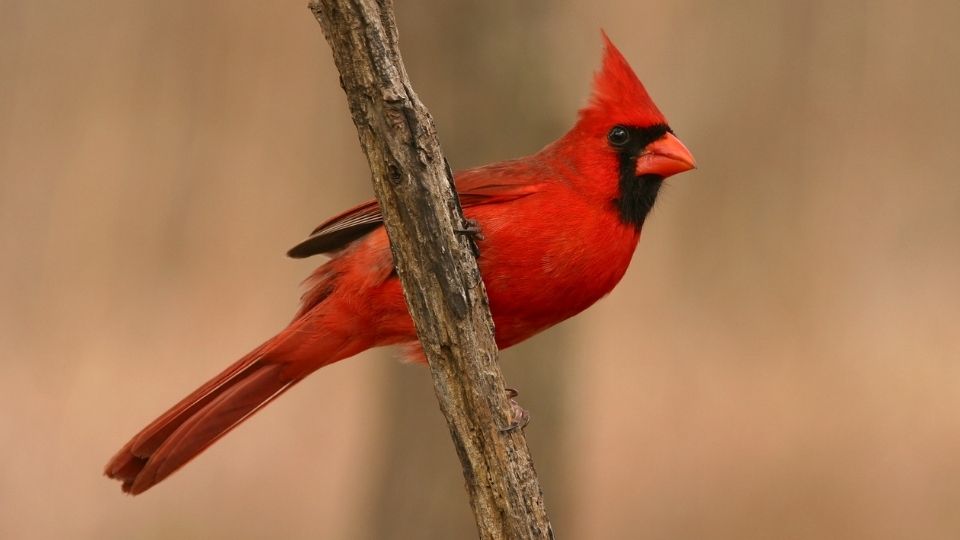
The most apparent difference between the two cardinal species is their bill. Northern Cardinals have a red beak, while Desert Cardinals have a yellow beak.
Adult males are bright red from their crest to the tip of their tail. But it is the deep black face mask and throat that gives the male Northern Cardinal its unique appearance.
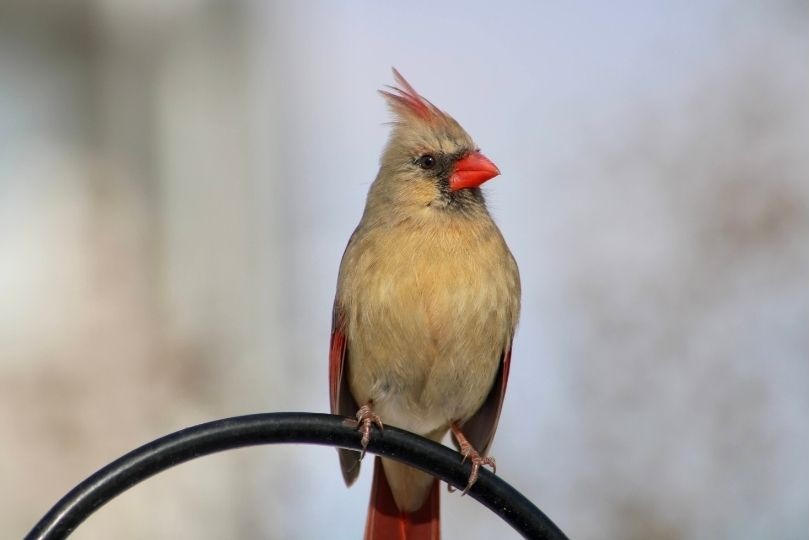
Female Northern Cardinals are a pale reddish brown. Their crest, wing tips and tail are bright red, but not nearly as dark as the male. Like the male, female cardinals have a dark red beak.
In contrast to their vibrant red cousins, Desert Cardinals are gray all over with red accents. This gray base color helps them blend into the desert shrubbery and thickets they call home.
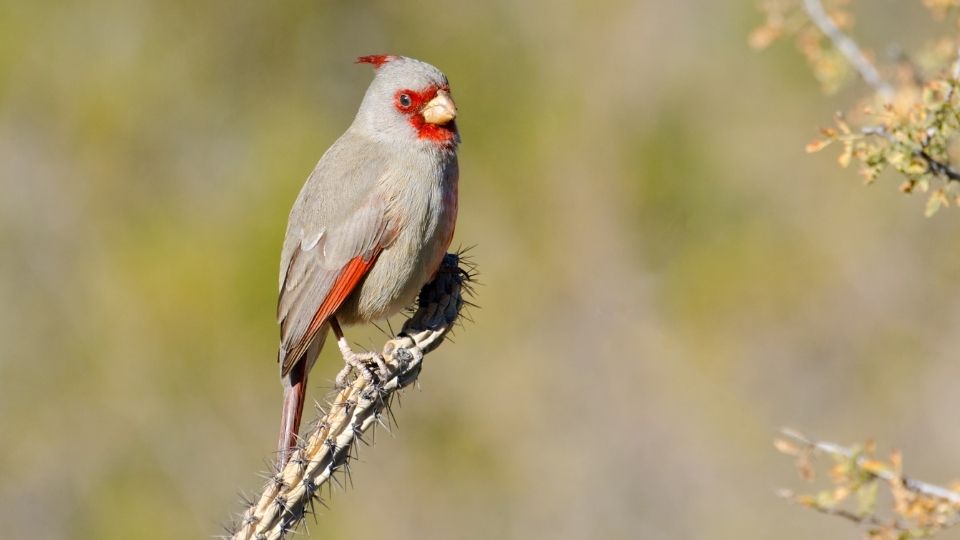
Both male and female Desert Cardinals have curved yellow bills. The adult male has red plumage on their face, crest, chest, wings, and tail. Female desert cardinals have dull black face markings, with red plumage confined to the tip of their crest, wings, and tail.
How many subspecies of Northern Cardinals are there and what are the most common?
There are 19 recognized subspecies of Northern Cardinals (Cardinalis cardinalis sp.). Though scientists have named these subspecies, there is very little research available on most of them.
Of the 19, three subspecies of Northern Cardinals are commonly logged by bird watchers in the United States.
The Cozumel Northern Cardinal (Cardinalis cardinalis saturatus)
The Cozumel Northern Cardinal bird lives off the eastern coast of Mexico’s Yucatan Peninsula.
This subspecies of Northern Cardinal is identified by a range map.
Red all over with a black face mask, the Cozumel Northern Cardinal is physically identical to typical Northern Cardinals.
These wild birds favor subtropical habitats and thrive on this Caribbean Island.
The Florida Cardinal (Cardinalis cardinalis floridanus)
The Florida Cardinal bird lives in Florida and Georgia. Like other Northern Cardinals, they share the typical red plumage and black face mask.
However, there are multiple confirmed sightings of yellow Florida Cardinals as recently as 2022.
According to experts, there are only 10-15 yellow cardinals in North America. The rare coloring is believed to be caused by a genetic mutation, where red pigmentation is blocked in the DNA and replaced by a brilliant yellow.
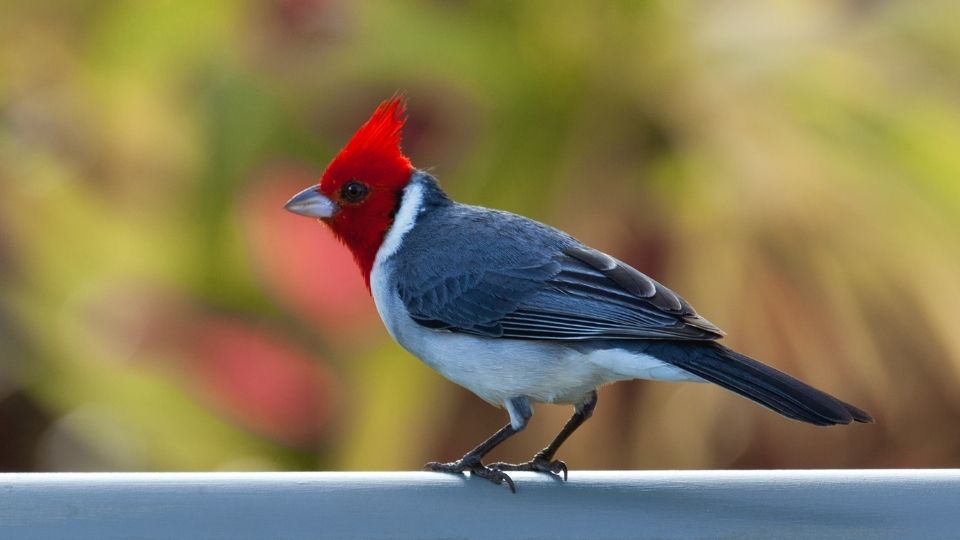
The Hawaiian Cardinal (Cardinalis cardinalis canicaudus)
The Hawaiian Cardinal bird is a non-native Northern Cardinal first introduced in 1929. They have become a common sight around Hawaii, and have been deemed illegal to capture or breed.
Aside from the Hawaiian subspecies of the Northern Cardinal, two more cardinal species were introduced to Hawaii in the 1900s. These species are from the Genus Paroaria and not related to Northern Cardinals.
The red-crested or Brazilian Cardinal (Paroaria coronata) was introduced to Hawaii in 1930. Both male and female Brazilian cardinals have gray bills and dark legs.

White with silver wings and tail, the crest and throat of the adult male is brilliant red. The female’s crest is more orange than red.
Brazilian cardinals are designated as invasive and causing serious issues with native Hawaiian birds.
The Yellow-billed Cardinal (Paroaria capitata) looks almost identical to the Brazilian Cardinal but has black wings, no crest on its red head, and a black throat. Though not currently considered invasive, that may change as their numbers grow.
Are Northern Cardinals exclusively red?
Just like the color mutation that causes the rare yellow Florida Cardinal, diet and genetics can affect the coloration of Northern Cardinals.
Bird watchers have found orange, yellow, and even white cardinals throughout the United States.
Color mutations in Northern Cardinals are incredibly rare. A dull or muted color may signal a bird who is unwell or had a poor diet prior to their last molt.
Albino or leucistic cardinals make up no more than one out of every 1,800 cardinals. The pale color patches and reduced coloration are caused by a genetic mutation that inhibits pigmentation from being deposited in the feathers and skin.
Watch our video and discover 10 facts about Cardinals you may not have known about!
Are there Green Cardinals?
In North America, green cardinals do not exist. While a yellow or leucistic cardinal may have a green cast from nearby leaves, there has been no recorded instance of an actual Northern Cardinal that is green.
Northern Cardinals with bright green plumage and a matching beak are altered photos created for April Fool’s pranks.
But Green Cardinals do technically exist.
The South American green Cardinal (Gubernatrix cristata) is also known as the yellow Cardinal. This small, crested bird is named in honor of Roman Catholic Cardinals, just like the American Cardinal. This is where the similarities end. This endangered gray and yellow bird is extinct in Brazil and dwindling in Argentina and Uruguay.
Experts are currently working to rebuild their numbers through captive breeding and release programs.
While the striking red of the Northern Cardinal makes it one of the most easily recognized birds in the United States, sightings of the rare and beautiful color variations are a treat for bird watchers.
No matter what color cardinal you find in your backyard, there’s no mistaking the striking crested plumage of this spectacular songbird.

